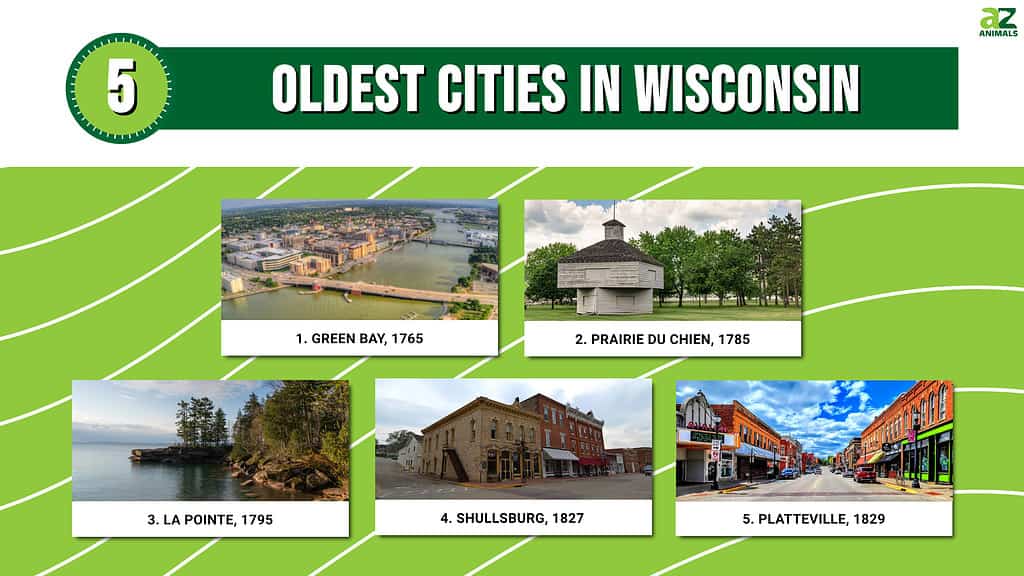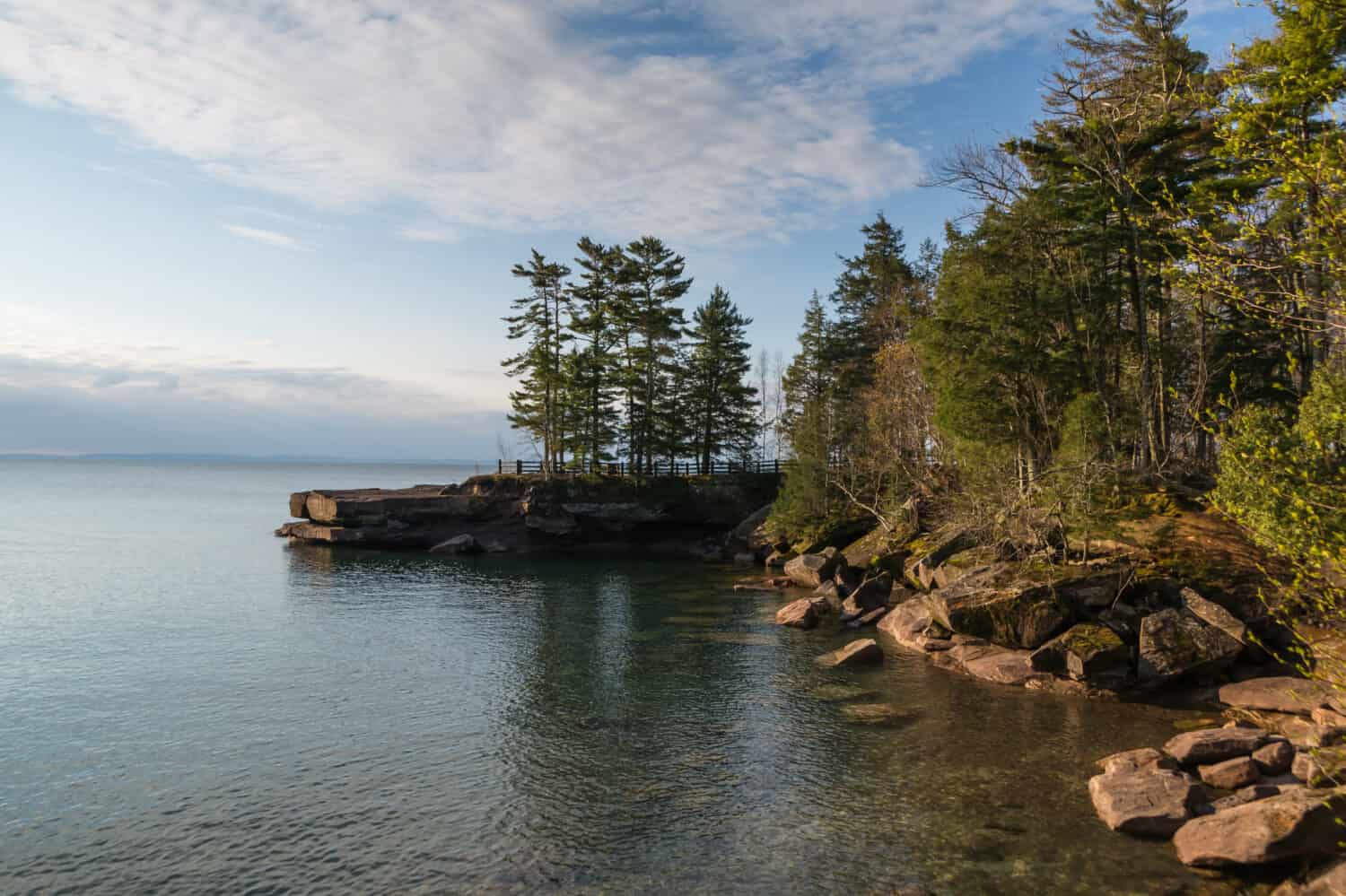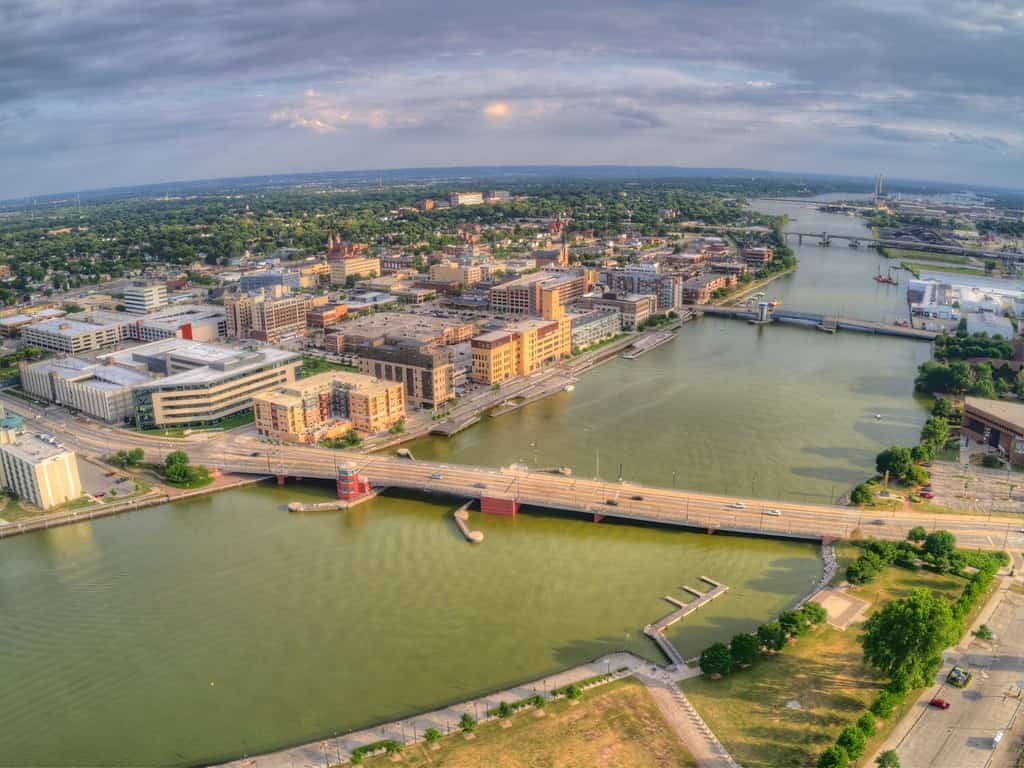Wisconsin is home to hundreds of towns and cities. These places range from small unincorporated communities home to a few dozen people to massive metros with populations in the hundreds of thousands. Most of these communities emerged in the 19th or 20th century after Wisconsin gained statehood and its population began to increase dramatically. However, some of these cities can trace their history back much further. Keep reading to learn all about the 5 oldest cities in Wisconsin.

History of Settlements in Wisconsin
The history of people in Wisconsin dates back thousands of years. The first Paleo-Indians arrived in Wisconsin around 14,000 years ago. These groups lived as hunter-gatherers and did not establish any known permanent settlements. Around 3,000 years ago, some of the descendants of these early peoples established permanent agricultural communities in the region. Notable settlements include the city of Aztalan, a massive ancient Mississippian settlement located in modern-day Jefferson County that was established around 900 CE.
The ancient Mississippian and Oneota cultures in the area eventually gave way to the modern Native American tribes that we know today. These include the Fox, Ho-Chunk, Ioway, Kickapoo, Menominee, Ojibwa, Pottawatomie, and Sauk. Some of these groups emerged from ancient tribes in the region, while others migrated to Wisconsin from lands to the north and east.
The first Europeans arrived in Wisconsin during the early 15th century. French explorer Jean Nicolet likely ranked as the first European in Wisconsin when he came ashore near modern-day Green Bay in 1634. Over the next several decades, many more Europeans – primarily French – traveled to the region. These early Europeans primarily came to the region as explorers, traders, and fur trappers. While some did stay in Wisconsin for extended periods, they did not establish any permanent communities. The establishment of permanent communities in Wisconsin did not begin until the region fell under British control after the French and Indian War.
Oldest Cities in Wisconsin
To determine the oldest cities in Wisconsin, we must define how we determine a city’s founding date. The Wisconsin Historical Society determines founding dates based on the arrival of the first permanent, year-round settlers rather than the establishment date of a seasonal trading post. As such, the city of De Pere – which supported a population of several thousand semi-permanent residents in the early 1600s – does not qualify, as the town was not permanently platted until 1836. Additionally, the oldest cities must still exist today in order to qualify. With this in mind, here are the 5 oldest cities in Wisconsin.
5. Platteville – 1829

Platteville was founded in 1829 and ranks as the largest city in Grant County, Wisconsin.
©Downspec, CC BY-SA 4.0 – License
With a population of 11,836 as of the 2020 census, Platteville ranks as the largest city in Grant County, Wisconsin. Located in the greater Platte River valley, Platteville lies nestled within rolling hills. These hills first drew white settlers to the area in the early 1820s when miners discovered lead buried within the hills. Native Americans had mined lead in the hills for millennia, but it wasn’t until Europeans arrived that commercial lead mining began in earnest.
John H. Roundtree officially founded the city of Platteville in 1829. Born in Kentucky, Rountree came to Wisconsin to make his fortune from the lead mines around Platteville. Over time, Platteville grew into a booming mining town. Lead mining eventually gave way to zinc mining once most of the lead deposits dried up around 1849. By this time, the town supported numerous businesses and services, including schools, churches, and a local newspaper.
Today, Platteville’s population and economy mostly revolve around the University of Wisconsin – Platteville. The university traces its origins back to 1959 with the merger of Wisconsin State College – Platteville and the Wisconsin Institute of Technology. Wisconsin State College – Platteville began life as Platteville Normal School. Founded in 1866, Platteville Normal School was Wisconsin’s first teacher preparatory school.
4. Shullsburg –1827

Shullsburg enjoys a rich tradition of lead mining and cheese-making.
©Rudinski Vyacheslav/Shutterstock.com
Founded in 1827, Shullsburg is one of the oldest cities in Wisconsin. Located in Lafayette County, Shullsburg supports a population of around 1,226 as of the 2010 census. The city enjoys a rich history of lead mining, cheese making, and farming.
Shullsburg is named after Jason Shull, a lead miner who arrived in the area around 1818. Other early arrivals to the area included Colonel Henry Gratiot, a French American pioneer, who founded Gratiot’s Grove, a mining settlement that eventually turned into a frontier fort during the Black Hawk War. You can still see the home he built, Gratiot House, just 2 miles south of Shullsburg. By 1827, the city of Shullsburg boasted numerous businesses thanks to the success of lead mines in the area, such as the Badger Mine. By 1870, the city’s population numbered over 2,700, and the arrival of a railroad in 1881 only helped to further the city’s development.
Today, Shullsburg is home to 34 buildings listed on the National Register of Historic Places. Most of these buildings date back to the time when lead mining drove most of the industry in Shullsburg. By the late 1970s, all of the lead mines in the area dried up, which hurt the city’s economy. Shullsburg’s population today numbers less than it did 100 years ago during the height of the lead boom. Still, those residents that remain have managed to pivot to other economic activities. The city’s main sources of income now come from tourism, cheese making, and farming.
3. La Pointe – 1795

Madeline Island is home to La Pointe, the 3rd-oldest city in Wisconsin.
©Hoogz Photography/Shutterstock.com
Located on Madeline Island in Lake Superior, La Pointe is an unincorporated community in the town of La Pointe, Wisconsin. The community lies on the western shore of Madeline Island, the largest of the 22 islands in the Apostles Islands archipelago. La Pointe’s population varies depending on the time of year. In winter, the population hovers around 430, while in summer, it comes up to around 2,500 with the arrival of summer tourists and residents.
For hundreds of years, Madeline Island was inhabited by the La Pointe Band of Lake Superior Chippewa and Ojibwe Band of Lake Superior Chippewa. French fur traders arrived in the late 15th century. Settlers arrived in the late 17th century and built a fort on the island in 1693. Over the next few decades, French fur traders operated temporary trading pots on the island. Around 1795, Michel Cadotte, a Metis fur trader of French-Canadian and Ojibwe descent, came to the island to trade furs. Cadotte ended up marrying Ikwesewe, the daughter of the hereditary chief of the Lake Superior band. This advantageous position helped Cadotte in his endeavors to build a trading empire on Lake Superior. The community grew even more once it became an outpost of the American Fur Company.
Today, La Pointe generates most of its revenue from tourism. People flock to Madeline Island in the summer to hike, bike, sail, camp, and fish. The island features a ferry as well as a small airport to facilitate travel.
2. Prairie du Chien – 1785

The Historic Old Fort Crawford resides in Prairie du Chien, Wisconsin.
©Carrie A Hanrahan/Shutterstock.com
Prairie du Chien resides in western Wisconsin and is the county seat of Crawford County. Situated near the confluence of the Mississippi and Wisconsin rivers, Prairie du Chien’s has been a popular trading center for hundreds of years. Today, the city supports a population of 5,506 people as of the 2020 census.
People often label Prairie du Chien as Wisconsin’s second-oldest city. French explorers Jacques Marquette and Louis Joliet first arrived at Prairie du Chien on June 17, 1673. French explorer Nicolas Perrot later established a trading post in the area in 1685. Prairie du Chien operated as an important fur trading hub up until the mid-18th century. In 1763, the British took control of Prairie du Chien after the end of the French and Indian War. The United States then took control of the region with the signing of the Treaty of Paris in 1783. American control of the region did not start to pick up until after the War of 1812 with the construction of Fort Shelby and Fort Crawford. The Borough of Prairie des Chiens was incorporated on September 17, 1821, later becoming the town of Prairie du Chien in 1849 and eventually the city of Prairie du Chien in 1872.
The city of Prairie du Chien houses 5 National Historic Landmarks as well as 9 sites listed on the National Register of Historic Places. These include the Astor Fur Warehouse and Fort Crawford Military Hospital. The city’s economy revolves around tourism, retail, manufacturing, service, and government jobs. It supports a port on the Mississippi River as well as two rail lines and a small municipal airport.
1. Green Bay – 1765

Green Bay is the oldest city in Wisconsin.
©Jacob Boomsma/Shutterstock.com
Near the mouth of the Fox River on Lake Michigan lies Green Bay, Wisconsin. The third-largest city in the state, Green Bay supports a population of 107,395 as of the 2020 census. It also ranks as the oldest city in Wisconsin.
French explorer Jean Nicolet supposedly landed at the Red Banks near modern-day Green Bay in 1634. He established a small trading post near his landing site named La Baye or La Baie des Puants. Translated into English, the name means “the Bay of Stinking Waters.” The area continued to function as a trading post for over a hundred years until Great Britain took over the land after the end of the French and Indian War. Shortly thereafter, Charles de Langlade and his family moved from Quebec and established the first permanent settlement at Green Bay in 1765. Farms began to crop up in the area, and the fur trade continued to remain dominant. The construction of the Erie Cancel in 1825 served to solidify Green Bay’s status as a trading center on Lake Michigan.
Today, Green Bay supports a diverse and thriving economy. The city is the home to the Green Bay Packers, a part of the National Football League. The team gets its name from the Acme Packing Company and Indian Packing Company, meat packing companies that helped to grow the city. Meatpacking industries still in Green Bay include JBS S.A. and American Foods Group. Other major employers in Green Bay include healthcare providers as well as paper producers such as Georgia-Pacific, Steen-Macek Paper Company, and Procter & Gamble. Green Bay also features a thriving arts and culture scene with popular attractions, including the Meyer Theatre, The Tarlton Theatre, and the Weidner Center at the University of Wisconsin – Green Bay.
Summary of the 5 Oldest Cities in Wisconsin
| Rank | City | Date Founded/Established |
|---|---|---|
| 1 | Geen Bay | 1765 |
| 2 | Prairie du Chien | 1785 |
| 3 | La Pointe | 1795 |
| 4 | Shullsburg | 1827 |
| 5 | Platteville | 1829 |
The photo featured at the top of this post is © Alexander Lukatskiy/Shutterstock.com
Thank you for reading! Have some feedback for us? Contact the AZ Animals editorial team.






